Contact us
Fluidisation
Fluidisation in the air
These dry condition techniques consist of fluidising light elements in an upward airflow in order to separate them from the heavier elements.
In the tables (pneumatic or densimetric), the light elements are separated from the table (or ‘deck’) and descend from this table due its gradient. The heavy elements leave via the upper section due to the shocks imparted to the table.
In the ZZ separator, the light elements are dragged by a rising current of air and recovered by means of cycloning. The heavy elements are recovered from the bottom of the separator’s Z circuit.
| Type | Level | Input | Solid flow | |
|---|---|---|---|---|
| Pneumatic flow table |
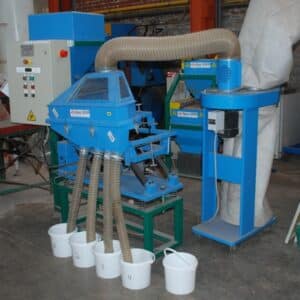
|
Laboratory | < 5 mm | 20 to 100 kg/h |
| Counter current gravity table |
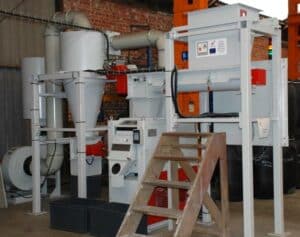
|
Pilot | < 20 mm | 50 to 300 kg/h |
| ZZ separator |
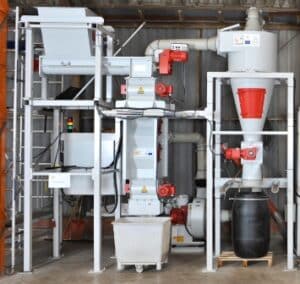
|
Pilot | < 40 mm | 100 to 1000 kg/h |
Fluidisation in water
Separations by fluidisation aim to separate the constituents of a mixture of particles on the basis of their mass density. Unlike dense-media separation, dependent solely on the density of the medium, the material is fluidised in a liquid medium (water) and acted on by mechanical movements. Contrary to centrifugal techniques, the principal force used is gravity.
Several methods can be implemented to carry out this separation:
- By differential acceleration: the particles of the mixture are subjected to periodic oscillation imparted on the medium, which causes a segregation between heavy and light elements, the heaviest being recovered from the bottom of the material bed. The CTP can offer several types of jig equipment using this principle.
| Type | Level | Input | Solid flow | |
|---|---|---|---|---|
| Bac piston |
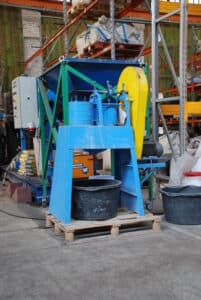
|
Laboratory | 2 mm - 20 mm | 4 to 6 kg/ batch |
| Jig |
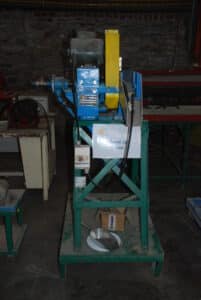
|
Laboratory | 2 mm - 20 mm | 70 to 200 kg/batch |
| Jig |
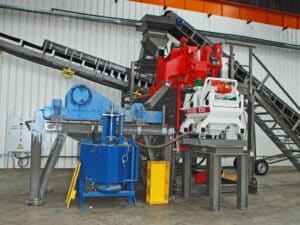
|
Pilot | 500 µm - 50 mm | 1 to 5 T/h |
- By skin flotation flowing in a wet medium: the solid/water mixture is broken down in the form of a liquid wave of low thickness flowing on an inclined surface. The particles are separated into several density categories depending on the speed of the fall and their resistance to movement. The separation can be carried out on the basis of density solely (spirals) or a combined action between the density and a mechanical acceleration by means of a vibrating table (millimetric particles) or a Multi Gravity Separator (particles < 100 µm).
| Type | Application | Input | Solid flow | |
|---|---|---|---|---|
| Coal spirals |
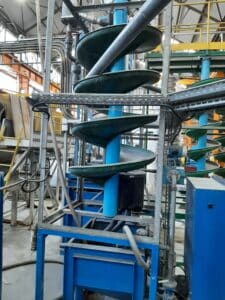
|
Coal, mica | 100 µm - 3 mm | 3 T/h |
| Mineral spirals (HG, MG, LG) | Oxides type W, Cr, Sn, Ti, gold, heavy sands, ground, slags,... | 75 µm - 1,5 mm | 1 to 2 T/h | |
| Vibrating table |
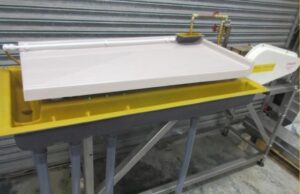
|
Laboratory | 500 µm - 2 mm | < 75 kg/h |
All
Our expertises